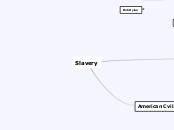Conclusion
In conclusion, the Indian Act has left a troubling legacy marked by systemic discrimination and cultural suppression. The act enforced residential schools, restricted Indigenous governance and limited land rights which continued on legacies of generational trauma.
References
-Native Women's Association of Canada. (2024). Indian Act | Native Women’s Association of Canada (NWAC). Retrieved from Native Woman’s Association of Canada website: https://nwac.ca/policy/indian-act#:~:text=The%20Indian%20Act%20was%20created
-Assembly of First Nations . (2020). WHAT IS BILL C-31 AND BILL C-3? WHAT IS BILL C-31 AND BILL C-3? Retrieved from https://www.afn.ca/wp-content/uploads/2020/01/16-19-02-06-AFN-Fact-Sheet-Bill-C-31-Bill-C-3-final-revised.pdf
-Austen, I. (2021, July 5). Canada’s Grim Legacy of Cultural Erasure, in Poignant School Photos. The New York Times. Retrieved from https://www.nytimes.com/2021/07/05/world/canada/Indigenous-residential-schools-photos.html
-CBC Listen. (2024, April 11). The Secret Life of Canada | CBC Podcasts | CBC Listen. Retrieved from CBC Listen website: https://www.cbc.ca/listen/cbc-podcasts/203-the-secret-life-of-canada
-Davies, J. G. (2023, September 29). Evolution of the modern pow wow - Native Sun News Today. Retrieved April 25, 2024, from Native Sun News Today - website: https://www.nativesunnews.today/articles/evolution-of-the-modern-pow-wow/
-Government of Canada. (2008, June 11). Statement of apology to former students of Indian Residential Schools. Retrieved from Government of Canada website: https://www.rcaanc-cirnac.gc.ca/eng/1100100015644/1571589171655
-Government of Canada; Indigenous Services. (2021, November 3). Maps of Indigenous communities in Ontario. Retrieved from www.sac-isc.gc.ca website: https://www.sac-isc.gc.ca/eng/1635957754306/1635957787562
-Hanrahan, L. (2021, June 18). Here’s what Ontario’s former residential schools are used for today | Urbanized. Retrieved from dailyhive.com website: https://dailyhive.com/vancouver/ontario-former-residential-schools-used-for-today
-Indigenous Foundations. (2011). Royal Proclamation, 1763. Retrieved from Arts.ubc.ca website: https://indigenousfoundations.arts.ubc.ca/royal_proclamation_1763/
-Johnson, F., & Bowen, L.-S. (2024). The Indian Act. Retrieved April 23, 2024, from Google Docs Presentation website: https://docs.google.com/presentation/d/1SmpaxF61CnwIxIwHNskx4TWe6MjkWDiCdt3IH9h6L_c/edit#slide=id.g60ccbb57ec_0_0
-Joseph, B. (2018). 21 things you may not know about the Indian Act : helping Canadians make reconciliation with indigenous peoples a reality. Vancouver, British Columbia: Indigenous Relations Press.
-Mussett, B. (2024). Redirect Notice. Retrieved April 25, 2024, from Google.com website: https://www.google.com/url?sa=i&url=https%3A%2F%2Fbcanuntoldhistory.knowledge.ca%2F1960%2Fthe-white-paper&psig=AOvVaw2dxDWi8Jnw289ZR2aEu0r6&ust=1714172466986000&source=images&cd=vfe&opi=89978449&ved=0CBIQjRxqFwoTCPCUt5m83oUDFQAAAAAdAAAAABAE
-Native Women's Association of Canada. (2024). Native Woman’s Association of Canada. Retrieved from Native Woman’s Association of Canada website: https://nwac.ca/media/2019/07/inherited-discrimination-the-legacy-of-the-indian-act
-Parrott, Z. (2022, September 23). Indian Act. Retrieved from The Canadian Encyclopedia website: https://www.thecanadianencyclopedia.ca/en/article/indian-act
-Vowel, C. (2016). Indigenous writes: A guide to First Nations, Métis & Inuit issues in Canada. Winnipeg, Manitoba: Highwater Press.
-Wikipedia Contributors. (2019, September 16). Gradual Civilization Act. Retrieved from Wikipedia website: https://en.wikipedia.org/wiki/Gradual_Civilization_Act
By: Azita. F
The Indian Act
1969
The White Paper
1927
Legal counsel
1885
Cultural Ceremonies
What are they?
Created in 1885 under the Indian Act, cultural ceremonies such as Powwows, Potlatches, the Sun Dance, and other forms were illegal for Indigenous people to perform and participate in. The ban of these ceremonies resulted in many generations deprived of their culture, with no traditions to pass down onto their families, their customs slowly died out.
"The third clause provides that celebrating the “Potlatch” is a misdemeanour. This Indian festival is debauchery of the worst kind, and the departmental officers and all clergymen unite in affirming that it is absolutely necessary to put this practice down."
-John A Macdonald, 1984
Present day
The Indian Act was amended again in 1951, lifting the ban from cultural ceremonies. With the many years the banning was upheld, the Indigenous community had lost their connection over time with their culture as generations continued to move forward without them.
1886
Residential Schools
What is it?
Residential schools were a mandatory policy under the Indian Act that sent First Nations, Metis, and Inuit children from the ages 4-16 to religious boarding schools run by Catholic, Anglican, Presbyterian, etc. churches. The purpose of these schools were to assimilate Indigenous children with Canadian society, "To kill the Indian in the child". Ways of assimilation removing all cultural and traditional aspects of their life such as forbidding them to speak their language, cutting their hair, enforcing racist Christian/Catholic ideologies, not permitting them to leave and see their families, and much more.
"It is estimated 6000 of the 150,000 children who attended the schools between the 1870s and 1996 either died or disappeared." (Joseph, 2018)
“When the school is on the reserve the child lives with its parents, who are savages; he is surrounded by savages. Indian children should be withdrawn as much as possible from the parental influence.”
-John A Macdonald, 1883
Present day
Residential schools have since been stopped, with the last one that was closed in 1996. Most schools have been abandoned, but some have been turned into museums, centres, and parts of universities. Examples include the Shingwauk Indian Residential School, National Indigenous Residential School Museum of Canada, and the Woodland Cultural Centre. The impact that Residential Schools have left on First Nations, Metis, and Inuit people have been devastating to families as generations have passed down their trauma leading to bad coping mechanisms such as relying on alcohol and to help them cope. A formal apology was made by Prime Minister Steven Harper to Fisrt Nations, Inuit, and Metis people for the Residential Schools created. on June 11, 2008.
Reserves
What is it?
Reserves are designated areas of land that are provided by the federal government under the Indian Act, to Indigenous people for their own use and benefit. When they were first created in 1876, it was to intentionally put Indigenous people in a space until they were more "civilized" to be let out with the rest of Canadian society, and to have Indigenous people out of the way for the Canadian government to expand and develop on their land.
Present day
Reserves are still being used today by First Nations people for residence, some used for hunting and other practices'. Although they are being used by First Nations peoples, reserves are not owned by them and is the property of the Canadian government or Band council.
1869
Status for Indigenous women
1876
1857
Gradual Civilization Act
1763
The Royal Proclamation









